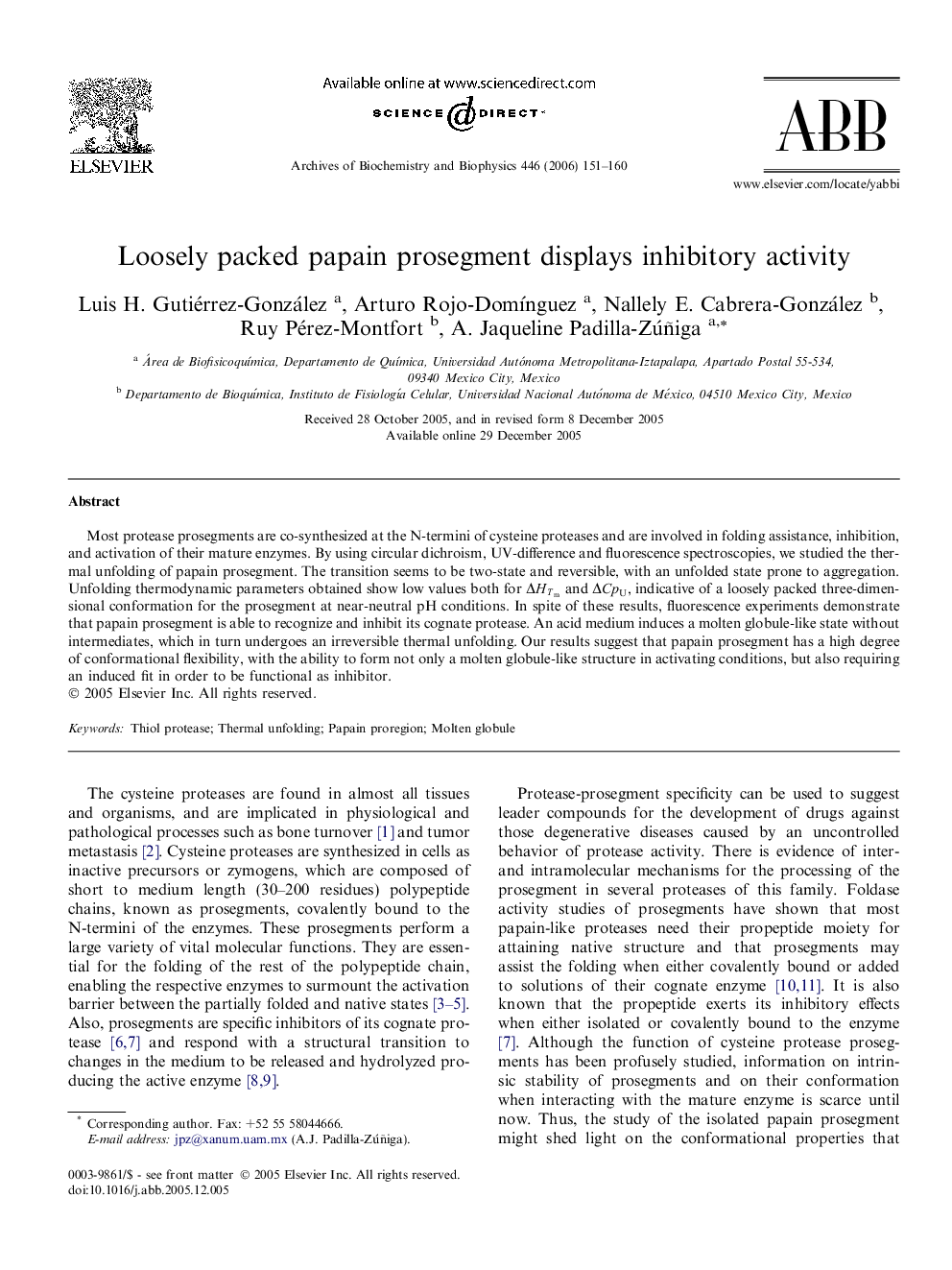| Article ID | Journal | Published Year | Pages | File Type |
|---|---|---|---|---|
| 1927614 | Archives of Biochemistry and Biophysics | 2006 | 10 Pages |
Abstract
Most protease prosegments are co-synthesized at the N-termini of cysteine proteases and are involved in folding assistance, inhibition, and activation of their mature enzymes. By using circular dichroism, UV-difference and fluorescence spectroscopies, we studied the thermal unfolding of papain prosegment. The transition seems to be two-state and reversible, with an unfolded state prone to aggregation. Unfolding thermodynamic parameters obtained show low values both for ÎHTm and ÎCpU, indicative of a loosely packed three-dimensional conformation for the prosegment at near-neutral pH conditions. In spite of these results, fluorescence experiments demonstrate that papain prosegment is able to recognize and inhibit its cognate protease. An acid medium induces a molten globule-like state without intermediates, which in turn undergoes an irreversible thermal unfolding. Our results suggest that papain prosegment has a high degree of conformational flexibility, with the ability to form not only a molten globule-like structure in activating conditions, but also requiring an induced fit in order to be functional as inhibitor.
Related Topics
Life Sciences
Biochemistry, Genetics and Molecular Biology
Biochemistry
Authors
Luis H. Gutiérrez-González, Arturo Rojo-DomÃnguez, Nallely E. Cabrera-González, Ruy Pérez-Montfort, A. Jaqueline Padilla-Zúñiga,
